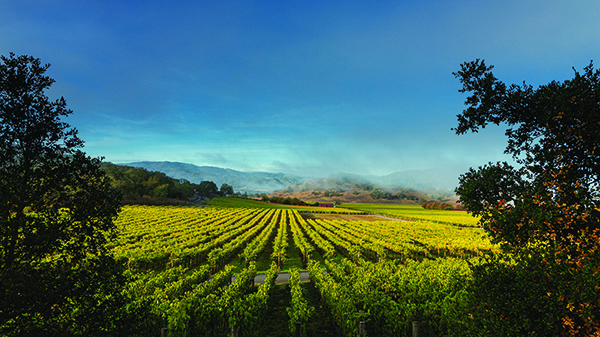The world of fine wines has long been dominated by illustrious French Bordeauxes and Burgundies, with these illustrious creations seen as the very pinnacle all things oenological. Over, the past 50 years, however, the supremacy of these venerable vintages has been challenged from a clearly impudent – but highly-rated – ascendant territory: California’s Napa Valley.
Not entirely a newcomer, this coastal region first crossed into global wine-making awareness back in 1861, when an intrepid trailblazer – by the name of Charles Krug – set up Napa Valley’s first commercial winery, one that remains active to this very day.
Scarcely had the region begun production some 160 years back when two factors combined to virtually snuff it out entirely. The first came in the form of phylloxera, a grape root-eating louse plague. This devastated not only Napa, but also every grape-cultivating region across the United States and Europe in the 19th century.
Thankfully, over subsequent years, it was discovered that grafting these old world vines onto the root stalk of a native species protected the grapes from phylloxera, while still retaining the preferred fruit characteristics for producing fine wines. The damage, however, was done and Napa’s viticulture was set back by decades.
Scarcely had this particular problem been resolve, when a very different calamity struck – the 1920 imposition of Prohibition across the US. It doesn’t require much imagination to realise how catastrophic this ban on the sale of alcohol was for the still-recovering estates of Napa Valley. In total, only about 60 wineries survived this wide-ranging legislation, with the innovation and determination of the remaining winemakers deserving much of the credit for ensuring the region not only survived but, eventually, came to global prominence.
In truth, Napa’s renaissance followed many decades of hard work, with the watershed moment came in 1976 with the Judgement of Paris – a tale fabulously retold in the 2008 hit indie film, Bottleshock. During this high-profile wine-tasting event, the judges were famously obliged to undertake a blind sampling of Cabernets and Chardonnays from both France and the US. In a shocking upset that few saw coming, it was the upstart wines from the Napa Valley that triumphed, catapulting the region to the forefront of fine winemaking.
Today, Napa Valley has an abundance of quality wines, different wine varietals and a truly beautiful ambience, with its hundreds of wineries also famed for their hospitality. To all intents and purposes within the oenological sphere, Napa is now California. In fact, Napa pretty much represents the whole of the US when it comes to winemaking. While other states may have their cult wines, when it comes to the most expensive varietals, nothing can compete with the staggeringly priced bottles produced by such Napa estates as Screaming Eagle, Harlan Estate and Tusk Estate.
Overall, eight of the US’s 10 most expensive wines come from Napa, with the most popular grape varietal being Cabernet Sauvignon, while the priciest is Screaming Eagle Cabernet Sauvignon, which regularly goes for a minimum of US$3,500 a bottle.
While the wines’ strong, delicious flavours definitely contribute to their exorbitant price tags, another key factor also plays a part. Even though Napa makes the most sought-after of all US wines, it only accounts for about four percent of overall production. This scarcity is reflected in the extreme difficulty in buying the region’s vintages.
In many cases, demand is so steep that wineries maintain mailing lists. Even getting on such a list is notoriously difficult and it can still be years before a newcomer gets a chance to actually buy anything. If the level of interest is anything to go by, however, it’s clearly a wait that’s more than worthwhile.








